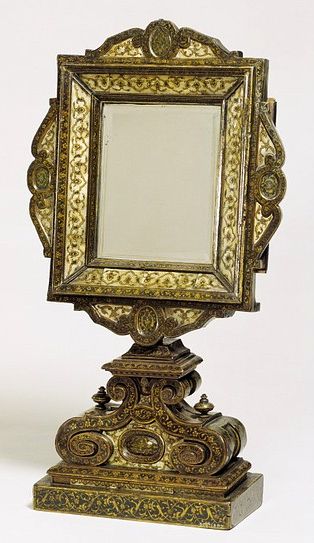ACCESSORIES
Glass mirrors were a marvelous new invention. While polished metal had served in the past, there were now pieces of silvered glass that gave off a brilliant reflection. Because they were very expensive, mirrors were the height of elegance and Venice was an important centre of production in the 16th century. The example shown here is decorated with inlaid mother-of-pearl. It shows Turkish influence as Venice was a maritime power with extensive links with the Eastern Mediterranean. The style of this mirror can be dated to the 1590s. (It can be seen in the Victoria and Albert Museum, London, England)
During the Renaissance, manners became more refined. An older type of straight table fork with two prongs was replaced by a more modern one with several tines. By 1600 the fork was commonly used by merchant classes and the elite in Italy. It was proper for a guest to arrive with his own fork and spoon enclosed in a box called a cadena.( Victoria and Albert Museum)

http://collections.vam.ac.uk/item/O110598/knife-and-fork/
|

http://collections.vam.ac.uk/item/O79780/mirror/
|
Click here to see the rest of the presentation on the
Italian Renaissance
return to top | previous page | next page